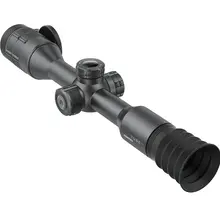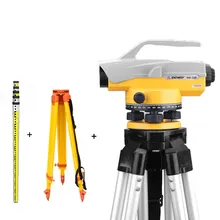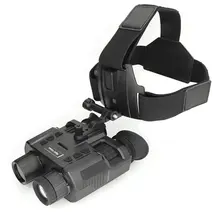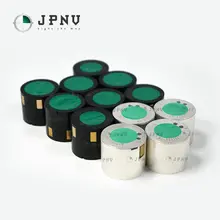An air ion tester is a refined instrument that gauges the level of ions in the atmosphere. These charged particles, both anions and cations, are pivotal to environmental health, influencing air cleanliness and, by extension, human well-being. The air ion tester is indispensable for preserving superior air quality across diverse environments, ranging from industrial sites to domestic interiors.
Types and Characteristics of Air Ion Testers
A variety of air ion testers populate the market, each engineered for distinct settings and uses. Portable units, such as the KT 401 air ion tester, are prized for their convenience and ease of use, facilitating immediate assessments in residential or office spaces. Permanently installed models offer ongoing surveillance, vital in sensitive areas like data centres where consistent air quality is imperative for the operation of machinery. Testers designed for scientific inquiry provide greater precision and can discern a wider array of ion sizes. Each variant caters to specific user needs, from individuals aiming to maintain a salubrious living space to researchers engaging in comprehensive environmental studies.
Structure and Operation of Air Ion Testers
The sophisticated design of an air ion tester underpins its effectiveness. Central to its operation is the ion-sensing electrode array, which detects the electrical charge of incoming ions. This core is encased by systems that manage airflow—often fans or pumps—and filters that exclude pollutants from skewing the results. The user interface, ranging from a basic LCD to an advanced digital console, exhibits the ion counts, enabling instant data interpretation. Certain models also boast USB or Bluetooth capabilities, allowing for data exportation for detailed analysis. The harmonious integration of these elements ensures the device's precision and dependability.
Materials Used in Air Ion Testers
The materials selected for constructing an air ion tester are pivotal to its performance. Sensors typically incorporate stainless steel for its endurance and anti-corrosive properties, essential for reliable operation over time. The enclosures are usually composed of robust plastics or composites, which not only withstand impacts but also shield the delicate electronics from electromagnetic disturbances. For high-precision instruments, materials are chosen to reduce extraneous ion noise, enhancing the accuracy of measurements. These materials are meticulously chosen, reflecting extensive R&D to strike an optimal balance between durability, efficacy, and affordability.
Business Usages and Applications
In the commercial sphere, air ion testers are deployed across a wide array of sectors. In the technology industry, they are indispensable for preserving the sanctity of clean rooms, where slight variations in ion concentration can precipitate substantial losses in product yields. The healthcare sector depends on them to ascertain that air quality in facilities does not exacerbate infection risks or interfere with sensitive medical apparatus. In hospitality, they are employed to gauge and enhance air quality in guest areas, directly influencing client contentment and health. These instances highlight the adaptability of air ion testers and their significance in enhancing operational efficiency, product standards, and health protocols.
Functions of Air Ion Testers
The fundamental role of an air ion tester is to deliver a quantitative assessment of air ion levels. This entails not merely tallying the ions but also ascertaining their polarity and concentration. Advanced models can further classify ions by size, a feature of particular relevance in research and industrial contexts where the impact of ions may vary by dimension. The capacity to execute these functions with speed and precision renders the air ion tester an invaluable asset in numerous professional domains.
Features of Air Ion Testers
Contemporary air ion testers come equipped with attributes that bolster their practicality and performance. Auto-calibration ensures consistent accuracy, while data logging features track ion concentrations over time, offering insights into air quality trends. Some units are fitted with interchangeable sensors, permitting customization for different ions or environments. These functionalities, among others, endow users with a degree of adaptability and control that distinguishes these instruments from their counterparts.
Benefits of Using Air Ion Testers
The advantages of utilizing an air ion tester are multifaceted. For enterprises, they can lead to enhanced product integrity and a safer work environment, while for individuals, they contribute to a more healthful living space. In scientific research, they furnish the necessary data to elucidate atmospheric phenomena and their implications for human and environmental health. Additionally, these devices assist in adhering to various health and safety standards, shielding businesses from potential legal challenges.
How to Use an Air Ion Tester Effectively
To effectively harness an air ion tester, one must grasp its capabilities and constraints. Consistent testing conditions are crucial for data reliability. Users should acquaint themselves with the calibration process and the interpretation of the device's outputs. When selecting an air ion tester, it is essential to choose a model that aligns with the specific demands of the intended environment, be it portability, sensitivity, or user-friendliness.
How to Choose the Right Air Ion Tester?
Choosing the right air ion tester involves aligning the device's features and capabilities with its intended application. Industrial settings may necessitate a sturdy and resilient model, whereas scientific research prioritizes precision and sensitivity. Consideration should also be given to the device's maintenance needs and the manufacturer's support services, as these factors influence the tester's long-term viability.
How to Maintain Your Air Ion Tester for Optimal Performance?
Consistent upkeep is crucial to maintain the precision and longevity of an air ion tester. This includes regular cleaning of the sensor chamber to avert accumulations that could distort readings, safe storage to prevent damage, and adherence to the manufacturer's recommendations for calibration and battery replacement. A diligently maintained air ion tester remains a trustworthy instrument, delivering precise data for an extended period.
Target Audience and Meeting Their Needs
The intended audience for air ion testers is broad, encompassing environmental health professionals, industrial quality controllers, scientific researchers, and individuals intent on maintaining a healthy indoor atmosphere. The requirements of these users vary significantly, from the need for portable, straightforward devices for home use to the demand for highly sensitive and adaptable testers for professional purposes. By comprehending the distinct needs and preferences of these groups, manufacturers can craft air ion testers that effectively satisfy the expectations of each user category.
Perusing Alibaba.com unveils a plethora of air ion testers, including the KT 401 air ion tester, which cater to a wide range of commercial needs. These devices are essential for upholding air quality and safeguarding individual well-being in various settings. Alibaba.com offers a selection of options to fit diverse requirements, from compact car air ion testers to more substantial models tailored for industrial applications.

































 浙公网安备 33010002000092号
浙公网安备 33010002000092号 浙B2-20120091-4
浙B2-20120091-4